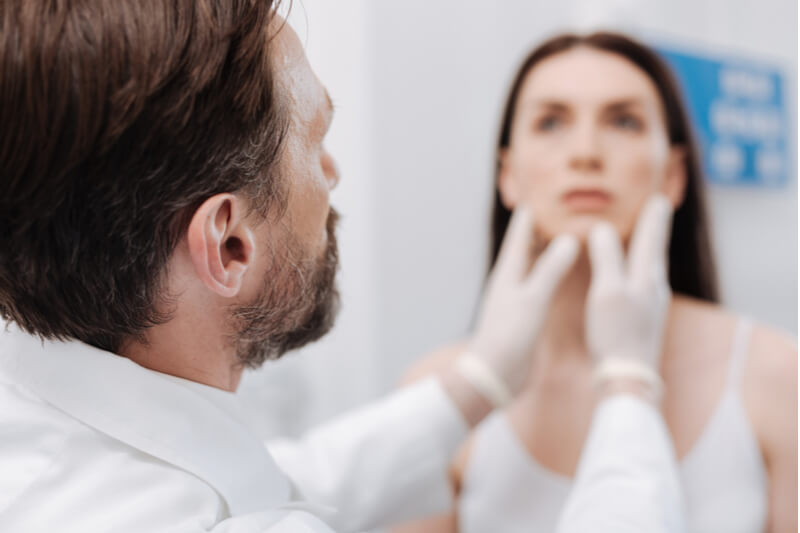Articles
Questions to Ask Your Plastic Surgeon
A plastic surgery procedure can be smooth and positive with open and honest communication between the patient and the plastic surgeon. For starters, choosing the right surgeon for breast augmentation depends largely on the alignment of their style of work and your goals so you can achieve natural-looking results.

Having your expectations and motivations aligned with the surgeon's is essential for satisfying end results. If you are considering plastic surgery, doing prior research is important to ensure that you and your plastic surgeon are on the same page and can directly address your concerns.
Here are some questions worth adding to your list and why they are important.
Important questions to ask a plastic surgeon
Am I a good candidate?
- A deciding factor on whether the procedure is suitable for a patient.
- Minimizes any possibilities of risk or complication.
Is it painful?
- Pain threshold varies for every patient.
- Patients need to know if appropriate pain medicine or anesthesia is provided for discomfort relief.
What should I expect of the surgery outcome?
- Patients can better visualize the result and manage their expectations.
- Patients can better understand if their desired goals are aligned with the expected outcome.
How do I prepare for the surgery?
- Some procedures require patients to cut off blood-thinning medications, smoking and drinking for at least a few weeks before the surgery.
Are there non-surgical options?
- Despite being a less-commonly asked question, non-surgical treatment is always a great alternative to an invasive procedure.
- Surgeons appreciate having more options that can help them determine a procedure that will best suit their patient’s needs.
What to ask your plastic surgeon about breast augmentation

Doctor’s experience and past cases
Having a clear idea of a surgeon’s past experiences with breast augmentation will help as substantial experience is highly preferable for such high-risk procedures. Gaining insights into the success of past cases will also provide you with the assurance needed to make sound decisions with the surgeon.
Risks involved
Being aware of any possible risks involved is crucial as it opens discussion on what can be done for early prevention. Clarifying risks asserts assurance in patients and can act as a standpoint for the plastic surgeon’s reliability and ethos.
Side effects & recovery process
Other than benefits, potential risks and complications of breast augmentation should also be weighed prior to the surgery. It is important that any possible side effects are discussed as pregnancy, weight loss, and menopause may have an influence on the condition of your breast implants and health in the long run.
During the 6- to 8-week course of recovery, the patient should wear the recovery bra and care for the incision areas as instructed by their surgeon. Aftercare is crucial as any infection or implant leak can lead to unwanted complications.
What to ask your plastic surgeon about eyelid surgery

Suturing vs incisional methods
The type of eyelid surgery - suture or incision - will be decided by the doctor based on a patient’s eye shape, muscle, symmetry and skin condition. During the consultation, patients should get the surgeon to thoroughly explain the pros and cons of each surgery type.
A surgeon will be able to determine the most appropriate course of treatment for you after assessing your condition.
Results to be expected
Having a clearer outlook on the expected results can help patients prepare better for the entire surgery process. Review the plastic surgeon’s gallery of previous cases and before and after photos to see if your desired goals are aligned with their style.
Ask for additional pictures or patient testimonials during your consultation. Having reliable reviews can also provide you with a prospect of your experience.
Recovery process
After an eyelid surgery, visible bruising and swelling are expected to last between 2 to 4 weeks. Patients may resume their daily activities after 2 weeks and return to work within a week for procedures such as upper blepharoplasty.
Having a better grasp of your recovery period can help you prepare for any additional leave of absences too.
What to ask your plastic surgeon about facelift

Doctor’s experience and past cases
Working with an experienced surgeon who has a positive track record of past cases can assure that you can achieve satisfactory results and a comfortable experience throughout. Ideally, you would want to work with a plastic surgeon who can help you further refine your facelift goals and offer you realistic expectations.
Risks involved
Possible risks caused by a facelift surgery can cause significant changes in the appearance and although rare, can be long-term or permanent. Patients should clarify any medical condition or lifestyle habit that can increase the risks of complications with the surgeon. Doing so will prevent any unfavorable results and the surgeon can offer appropriate advice as they see fit.
Side effects & recovery process
Potential side effects from a facelift procedure may range from mild pain to drainage from incisions and numbness. The incisions will be covered with bandages to minimize swelling and bruising, and patients would have to take great care during the first few days.
As part of the recovery process, several follow-up appointments will be scheduled during the first two months. Post-surgery self-care includes following a list of instructions by the surgeon, and temporary lifestyle changes that the patient would have to strictly adhere to.
Finding the right plastic surgeon in Singapore

Knowing your surgeon allows you to carefully choose the right board-certified plastic surgeon with the proper equipment, safety, credentials, and staffing. Additionally, getting to know the plastic surgeon during your consultation is imperative to allow the plastic surgeon to get to know you and your needs. Getting across any of your existing doubts and having them clarified allows for an improved doctor-patient relationship, leading to a more comfortable and positive experience.
Contact Form
1 Orchard Boulevard #10-08 Camden Medical Centre, Singapore 248649
6 Napier Rd, #08-01 Gleneagles Medical Center, Singapore 258499
Tel: +65 6737 4565 | Mobile: +65 8828 4565 | Email: clinic@polarisplasticsurgery.com | Business Hours: Mon - Fri: 9am - 6pm | Sat: 9am - 1pm | Sun/Ph: Closed











